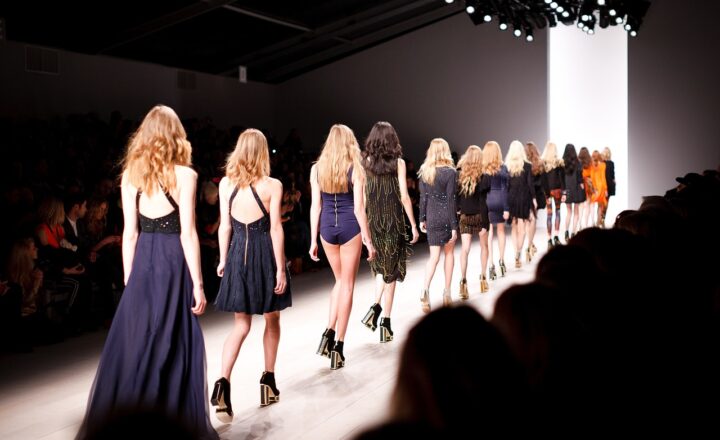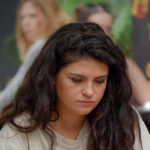Fashion Through the Ages: How Iconic Decades Shaped Today’s Trends
November 19, 2024

Fashion is a fascinating reflection of our history, culture, and societal values. Over the past century, numerous iconic decades have influenced modern fashion in various ways. From the glamorous flapper dresses of the 1920s to the bold and eclectic styles of the 1980s, understanding these influences helps us appreciate the trends we see today.
In this article, we will explore how fashion evolved through the decades, highlighting key trends, influential figures, and cultural shifts that continue to resonate in today’s style landscape.
1. The Roaring Twenties: Liberation and Elegance
The 1920s, often referred to as the Roaring Twenties, was a time of great social change and cultural upheaval. Women gained the right to vote, and the era saw a shift towards more liberated lifestyles. Fashion mirrored this newfound freedom with the introduction of the flapper dress—characterized by its loose fit, dropped waistline, and extravagant embellishments.
Key elements of 1920s fashion:
- Flapper Dresses: These iconic dresses were designed to promote movement and comfort, reflecting women’s growing independence.
- Cloche Hats: This close-fitting hat style became a staple of women’s fashion, adding a touch of elegance and sophistication.
- Art Deco Influence: Geometric shapes and bold patterns characterized the fabrics, paired with statement jewelry such as long pearl necklaces and feathered headpieces.
As we moved into the 21st century, the spirit of the Roaring Twenties resurfaced in the resurgence of vintage-inspired collections and designs that continue to captivate fashion enthusiasts today.
2. The Fabulous Fifties: Post-War Glamour
The 1950s represented a return to traditional values following the upheaval of World War II. Clothes reflected this shift, focusing on femininity and sophistication. Iconic figures such as Audrey Hepburn and Marilyn Monroe became symbols of elegance and style.
Key trends of the 1950s:
- Swing Dresses: These full-skirted dresses epitomized feminine beauty and were often paired with fitted bodices and cinched waists.
- Poodle Skirts: A popular teen trend, these skirts featured designs of poodles or other prints, often paired with fitted tops and bobby socks.
- Tailored Suits: Men’s fashion saw the rise of tailored suits with narrow lapels and structured silhouettes, reflecting post-war prosperity and style.
The influence of the fifties can be seen today in the resurgence of retro-inspired silhouettes, with many contemporary collections paying homage to this glamorous decade.
3. The Bold Sixties: Revolution and Individualism
The 1960s marked a dramatic turning point in fashion, reflecting broader social changes such as the civil rights movement, the feminist movement, and a growing counterculture. Designers like Mary Quant pushed the boundaries with bold colors, geometric patterns, and innovative materials.
Key details from the sixties:
- Mini Skirts: This groundbreaking style, popularized by designers like Quant, revolutionized women’s fashion and offered a newfound sense of freedom and expression.
- Psychedelic Prints: Bold and colorful patterns became synonymous with the hippie era, promoting self-expression and individuality.
- Unisex Fashion: The rise of androgynous styles began in this era, where traditional gender roles in clothing started to blur, paving the way for today’s more inclusive fashion trends.
Many of the colorful, daring patterns from the sixties continue to inspire current designers, reinforcing the importance of individualistic expression in fashion today.
4. The Disruptive Seventies: Free Spirit and Self-Expression
The seventies embraced individuality and free-spiritedness. Influenced by music, culture, and political movements, fashion from this decade showcased a blend of styles, from hippie and bohemian to glam rock.
Key fashion highlights of this era:
- Bell-Bottoms: These iconic trousers were a staple, often paired with colorful blouses or fitted tees, representing the carefree attitude of the era.
- Maxi Dresses: The maxi dress became a fashionable choice for women, symbolizing comfort and independence while showcasing vibrant patterns and colors.
- Glam Rock Influence: Artists like David Bowie and Elton John wore extravagant outfits featuring sequins, leather, and makeup, pushing fashion into new territories of gender expression.
Today, we see the ongoing influence of seventies-inspired designs in boho-chic collections, festival wear, and the continued popularity of flared jeans and maxi dresses.
5. The Power-Packed Eighties: Excess and Innovation
The 1980s are often characterized by excess, boldness, and a sense of celebration. This vibrant decade saw the rise of power dressing and the establishment of notable fashion icons such as Madonna and Prince.
Key traits of eighties fashion:
- Shoulder Pads: These padded garments became a symbol of women’s empowerment in the workplace, projecting strength and confidence through their structured silhouettes.
- Bright Colors and Prints: Neon colors, bold patterns, and graphic tees defined the aesthetic, reflecting the energetic spirit of disco and pop culture.
- Athleisure Wear: The rise of casual athletic wear blurred the line between fitness and fashion, paving the way for today’s athleisure trend that remains ever-popular.
Many of the bold and vibrant elements of eighties fashion find their way into contemporary streetwear, while power dressing continues to be a significant aspect of professional attire today.
Conclusion: Fashion’s Ever-Evolving Narrative
Each decade has left its mark on the intricate tapestry of fashion, influencing modern trends and how we express ourselves through clothing. From the liberation of the twenties to the boldness of the eighties, historical influences will always play a vital role in shaping contemporary fashion. Embracing this rich history allows us to appreciate not only the creativity and artistry of garment design but also the cultural dialogues that fashion continues to inspire.
As we move forward, the cyclical nature of fashion will undoubtedly bring back elements from each of these iconic eras, allowing us to dress today with the knowledge and appreciation of where our style has originated.






